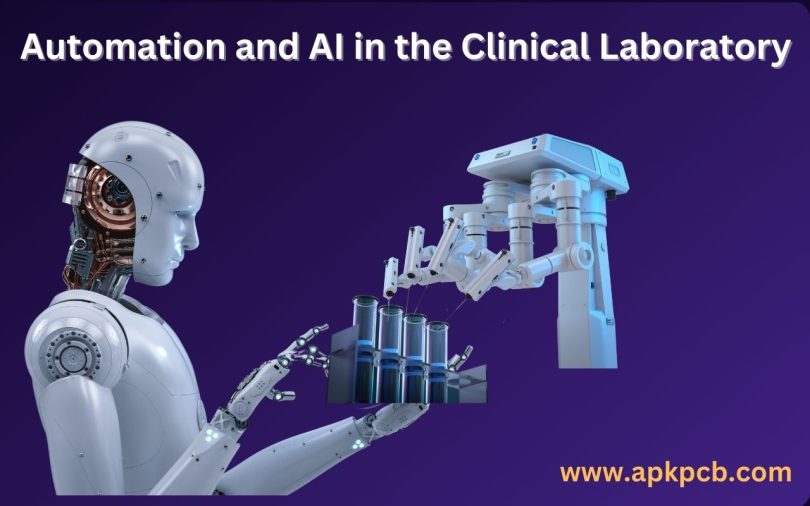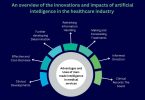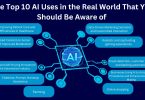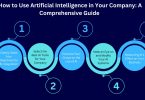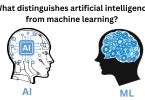In healthcare, diagnostic labs are embracing advanced technologies like AI, ML and Data Analytics (DA) to adapt to the data-driven world. These technologies are reshaping how medical labs function, optimizing workflows and ultimately enhancing patient outcomes.
Automation in Diagnostic Laboratories:
Diagnostic laboratories are rapidly undergoing digitization, integrating Laboratory Information Management Systems (LIMS) and Robotics Integrated Management Systems (RIMS). The increasing sophistication of lab equipment and partial automation have made labs vital data hubs, capturing and generating a vast amount of information.
Managing Massive Data in Diagnostic Labs:
With billions of diagnostic tests conducted globally, the sheer volume of data generated is staggering. The World Health Organization’s Essential Diagnostic List (EDL) outlines 113 essential tests, adding to the extensive data repository. To stay competitive and effective in the industry, laboratories must adeptly manage the influx of data.
Key Performance Indicators (KPIs) for Lab Efficiency:
The complexity of lab operations demands effective metrics to gauge performance. KPIs offer valuable insights into the quality, effectiveness, and efficiency of a laboratory. These metrics, such as sample turnaround time, test volume per instrument, test cost per unit, repeat rate, quality control measures, accuracy rate, staff productivity and reporting time, are vital in evaluating lab performance.
AI, ML and DA Solutions Enhancing Lab Operations:
A notable trend in the industry is the adoption of AI, ML and DA solutions to enhance operational accuracy and KPIs.
These technologies are poised to take on tasks that traditionally required human intelligence, leading to improved efficiency and accuracy in lab operations.
Transformative Impact on Healthcare:
The integration of AI, ML and DA in medical laboratories offers a myriad of benefits, including increased accuracy, faster results, predictive analytics, personalized treatment plans, reduced costs, improved patient outcomes and advancements in research and development.
These technologies are reshaping the healthcare sector, ushering in a new era of patient-focused care.
Exploring the Transformative Potential of AI in Medicine:
Empowering Diagnostic Labs: The AI Revolution.
AI is transforming diagnostic labs and the entire healthcare industry. Its transformative impact is evident across various aspects, from enhancing diagnostic accuracy and reducing turnaround time to predicting disease patterns and improving overall patient outcomes. By addressing critical challenges faced by medical labs, AI emerges as a game-changer, ensuring efficient operations and superior healthcare solutions.
Statistical Insights into the AI Healthcare Boom:
Research indicates a substantial growth trajectory for AI in healthcare, with an anticipated increase from $23 billion in 2020 to a staggering $194.4 billion by 2030, boasting a remarkable CAGR of 38.1% between 2021 and 2030. Studies underscore the significant enhancement in diagnostic accuracy, with AI-assisted diagnosis demonstrating a 33.7% improvement compared to unassisted methods. Particularly in mammography interpretation, AI has led to a 30% reduction in false positives and a 20% reduction in false negatives, revolutionizing cancer detection.
AI’s Strategic Role in Overcoming Challenges:
Inaccurate and Inconsistent Results: AI algorithms discern intricate patterns in data, minimizing errors and ensuring consistent, reliable laboratory outcomes.
Handling Large Data Volumes: AI streamlines the processing and analysis of vast medical datasets, accelerating decision-making and enhancing accuracy.
Time-Consuming Tasks: Automation through AI mitigates manual tasks, expediting analysis, and boosting productivity, thereby optimizing operational efficiency.
Limited Expertise: AI acts as a knowledge multiplier, offering expert insights and support in complex areas such as pathology and image analysis, compensating for skill shortages.
Cost and Resource Efficiency: By automating tasks and enhancing productivity, AI enables labs to navigate budget constraints effectively, ensuring optimal resource utilization.
AI Automation & Healthcare: What the Future Holds.
AI, encompassing machine learning, natural language processing, computer vision and robotics, represents a paradigm shift in healthcare. Its ability to augment diagnostic precision, personalize treatments, and propel medical research showcases its immense potential. As AI continues to evolve, diagnostic labs are poised for a future where efficiency, accuracy, and innovation converge, ultimately elevating healthcare standards for all.
Conclusion:
The integration of cutting-edge technologies like AI, ML, and Data Analytics in diagnostic labs has not just been a leap but a revolution. As the digital pulse beats faster, these innovations have become the lifeblood of medical labs, breathing efficiency and precision into their very core. The labs are no longer confined by the limits of traditional methodologies. Instead, they stand at the forefront of a transformative wave, embracing the power of artificial intelligence to optimize workflows, reduce errors and enhance patient outcomes. They equip diagnostic labs with the essential advantage required to navigate the intricacies of modern healthcare. As we peer into the future, we see not just machines and algorithms but a paradigm shift where human expertise harmonizes with technological brilliance. In this amalgamation, accuracy meets speed, innovation meets tradition and efficiency meets empathy. The journey ahead holds the promise of a healthcare landscape where every diagnosis is sharper, every treatment plan is more personalized and every outcome is brighter.


